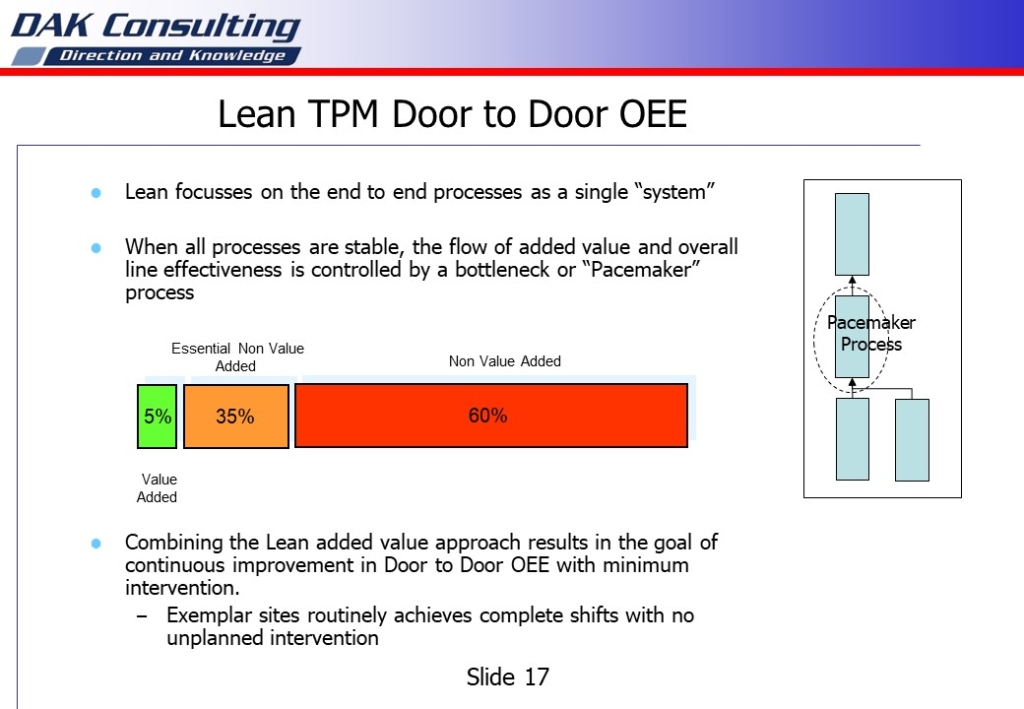
There are many examples of organisations who have applied TPM (Total Productive Maintenance) principles and techniques to deliver industry leading performance levels yet TPM is often considered as simply operator maintenance.
Operator Maintenance is part of the TPM toolbox but the strength of the TPM process is in driving continuous improvement in equipment effectiveness (with the emphasis on continuous) through cross functional team activities.
The power of TPM comes from activities that engage front line team and leaders with problem ownership through the development of capability to:
- Maintain basic conditions (to reduce accelerated wear)
- Prevent mis operation and human error (to reduce defects)
- Improve process control to refine process precision, flexibility and resilience.
Adopting TPM principles as an equal partner within a Lean programme provides the vehicle to develop a proactive improvement culture and ratchet up the flow of value as each level of effectiveness is achieved.
Where to start
Create cross functional teams with a remit to undertake improvement activities as part of their routine. Allocate around 5% of their time to work on this.
Raise the teams awareness of both Lean and TPM principles and help them to develop a practical improvement glide path. One that includes the two main causes of breakdowns alongside the 7 Lean wastes. These are:
- Accelerated wear/poor equipment condition: that includes targeting the scattering of dust and dirt, setting standards for equipment condition to
- Human error: That includes dealing with gaps in work routines and understanding of operational processes.
These two account for around 85% of the causes of breakdowns and recuring failures. Countermeasures involve setting equipment condition standards and dealing with gaps in best practice work routines.

To guide priorities, define the improvement glide path and track progress, apply the TPM Overall Equipment Effectiveness measure to the Door to Door value stream rather than individual assets.
Support the cross functional team with relevant improvement tools to deal with issues that:
- Stop the end to end process from working (Availability)
- Extend processing time (Performance)
- Impact on process quality (Quality)

When doing that, adopt a Lean TPM mindset so that the improved work routines
- eliminate anything that doesn’t add value.
- Are refined through practical application until they are easy to do right, difficult to do wrong and simple to learn.
That way you lock in the gains and release time to focus on the future performance opportunities. AKA Ratchet up performance!
Find out more at https://dakacademy.live/lmc
Article by
Dennis McCarthy
DAK Consulting.
6 February 2023.
